Met coal could be reaching a cyclical low |
- Met coal could be reaching a cyclical low
- Joy Global sees strength in copper price
- Gold price shrugs weak US jobs
- The World Gold Council doesn’t get China’s demand — Koos Jansen
- Canadian government ‘not pleased’ with Nova Scotia’s plans to ban fracking
- QE3’s ominous end looms
| Met coal could be reaching a cyclical low Posted: 06 Sep 2014 03:57 AM PDT By Henry Bonner (hbonner@sprottglobal.com) A particular type of coal – called metallurgical coal or coking coal – is used in the process of manufacturing of steel. After reaching a six-year low in its price and recent industry cutbacks to production, metallurgical coal is showing classic signs of a resource that is ready for a cyclical uptrend. Steve Yuzpe, CEO of Sprott Resource Corp., specializes in finding long-term value plays in the private equity sector. He says metallurgical coal is an out-of-favor sector, and by his estimation, it is cheap and the price is probably due to improve. In 2011, unusually heavy rainfall and flooding in Australia disrupted the production of metallurgical coal, causing the price to surge. The industry responded to higher prices by boosting their output of metallurgical coal, adding substantial production capacity. A lot of that new capacity depended on high prices to be economic, as they were brought online when metallurgical coal was over $300/tonne. Long-term observers of resource markets will guess what happened next. The production increase led to an oversupply of metallurgical coal, causing the price to plummet. From 2011 to 2014, the price of metallurgical coal fell by over 60% to $120/tonne today. At the current low price, more than half of the supply of metallurgical coal is being produced at a loss on operating costs, without accounting for exploration and development costs that must be recouped Source: Wood Mackenzie, Quintana Capital The industry has responded by announcing cuts to production, as lots of the new capacity has become uneconomic. The industry has announced cutbacks of over 20 million tonnes of production, representing approximately 6.5% of global exports.1 Many industry participants are being wiped out. Steve says many stocks he's been following in the sector are down over 90% since 2011. Since the 2011 peak, metallurgical coal producer Walter Energy, Inc. is down 96%2. Coal producer Arch Coal Inc. fell by around 91% in the same time period3 and another large producer, Alpha Natural Resources, Inc., fell by over 96%.4 While supply cutbacks are underway, demand continues to grow steadily. Steel production, which drives the demand for metallurgical coal, has continued to rise gradually, growing by 2.4% in 2013 – in line with the average growth rate for steel production of 2.6% per year since 1980.5 Drivers for steel demand include urbanization in emerging economies, infrastructure spending and automotive demand. Also, the demand for metallurgical coal is not jeopardized by competition in the energy sector from oil and gas, like conventional coal. Metallurgical coal is a specific type of coal that isn't used to generate electricity. We often point out that bull markets begin when shrinking supply encounters steady or rising demand for a commodity. In a bear market, producers cut costs and lower their general and administrative costs. They defer or cancel expansion plans, and put uneconomic mines on care and maintenance. Eventually, the lower supply cannot keep up with demand, which sets off an uptrend in the commodity price and encourages new investment. Source: Teck Resources Steve says metallurgical coal is an attractive target for contrarian resource investors, adding that Sprott Resource Corp. recently invested significant capital in Corsa Coal Corp. – a metallurgical coal producer in the United States. Steve believes Corsa Coal Corp. is strongly positioned in the current market environment with significant upside should metallurgical coal prices recover. Sprott Resource Corp. is managed by one of Canada's leading teams of resource private equity specialists. They currently have investments and operations in oil and gas, energy, agriculture and agricultural nutrients. They take an active involvement in the companies where they invest. They are dedicated to generating consistently superior returns on capital for shareholders, while focusing on risk management and real wealth preservation. For questions about Sprott Resource Corp., contact Steve Yuzpe by phone at 417.977.7333 or e-mail info@sprottresource.com, or visit their website www.sprottresource.com. 1 Teck Resources, Second Quarter 2013 Results |
| Joy Global sees strength in copper price Posted: 05 Sep 2014 02:03 PM PDT The price of copper has dug itself out of a hole since hitting a near four-year low of $2.93 a pound in March. At the close of regular trading in New York on Friday, December copper was trading at $3.17 a pound, showing some strength amid expectations of a slide back below $3 a pound. Weak economic news out of China, consumer of 45% of the globe's copper, is the number one factor behind the negative sentiment, but the supply side is adding to concerns for the rest of this year and 2015. Mine production is ramping up again and is forecast to grow 5% this year and more than 7% in 2015, while Freeport McMoran (NYSE:FCX), Indonesia's largest copper concentrate producer, resumed exports after a six months hiatus and Newmont Mining (NYSE:NEM) is set restart shipments from the country following a dispute over concentrate duties. Joy Global (NYSE:JOY) on Thursday logged lower-than-expected quarterly revenue and profits, but the Milwaukee-based company in a conference call is expressing optimism about the outlook for the copper price: Turing to global copper market, we continue to see strength in both business activity and the underlying fundamentals of the copper market. The unexpected 400,000 tonne deficit through the first half of the year reflects two dynamics. First, the typical supply disruption that occur simply from geological conditions or from policy decisions remain prevalent in the market. And second, the strong demand that has resulted from global economic growth continue to support the plus $3 per pound copper and where we see strong activity in our quote log. During the quarter, we did receive three large shovel orders for copper mines. We also saw our service business in Latin America return to the 2012 run rate for the first time in the last five quarters. The expectation for copper to return to a deficit post 2015 continues to drive longer term investment for those that are well positioned on the cost curve. The mining dynamics of lower ore grades, higher strip ratios and a great percentage of ore deposits moving underground can clearly be seen in the copper market. |
| Gold price shrugs weak US jobs Posted: 05 Sep 2014 12:59 PM PDT On Friday gold futures received an initial jolt after a US jobs report that came in way below expectations, but the buying soon dried up with the metal continuing to drift near 12-week lows by the close. In afternoon trade on the Comex division of the New York Mercantile Exchange gold for December delivery was changing hands for $1,267.30 an ounce, up less than a $1 an ounce compared to yesterday's closing price. The metal hit a day high just shy of $1,275 shortly after the news broke that the US economy created only 142,000 jobs in August, much lower than the expected an increase of 228,000 on non-farm payrolls. It was the smallest gain since December and while the unemployment rate ticked down to 6.1%, that was mostly as a result of people stopping to look for work and dropping out of the labour pool. Scott Carter, CEO of gold and silver broker Lear Capital, told MINING.com he was surprised by the subdued reaction of the gold price, but not by the evidence of continuing economic weakness in the US. "I've been a contrarian all year and issues like the participation rate should give the Fed pause. I'd be surprised if we get a rate hike before the third quarter of the next year," says Carter. Los Angeles-based Lear Capital does around $250 million in revenue on the physical gold and silver market and Carter believes the disconnect between the paper and physical market in precious metals will correct itself. "The paper market is keeping a lid on the price, but gold has built a solid base this year. It won't take much to cause a serious break out," says Carter, who believes further European economic shocks or a 10% – 20% US stock market correction could be the trigger that send money back into gold. Carter says he recently forecast gold to end the year at $1,450 an ounce and although he's less convinced of that price today, 2014 is likely to be an up year: "And with the right catalyst, gold could easily end the year up 15%". The gold market has been uncannily quiet this year trading in an 8%-band since April but almost half the time the daily close has been within 1% of the average price of $1,296 an ounce during this time. Year to date the metal is up just over 5%, recovering from a 2013 performance which was the worst in more than three decades. |
| The World Gold Council doesn’t get China’s demand — Koos Jansen Posted: 05 Sep 2014 12:07 PM PDT Chinese gold demand is considerably higher than widely assumed and disclosed, particularly when it comes to data provided by the World Gold Council (WGC), researcher and consultant for the Gold Anti-Trust Action Committee (GATA) Koos Jansen said Friday. Writing for the BullionStar.com, he argues the omissions and inadequacies of the WGC reports on China's gold demand are far larger than what the body would let the world see. 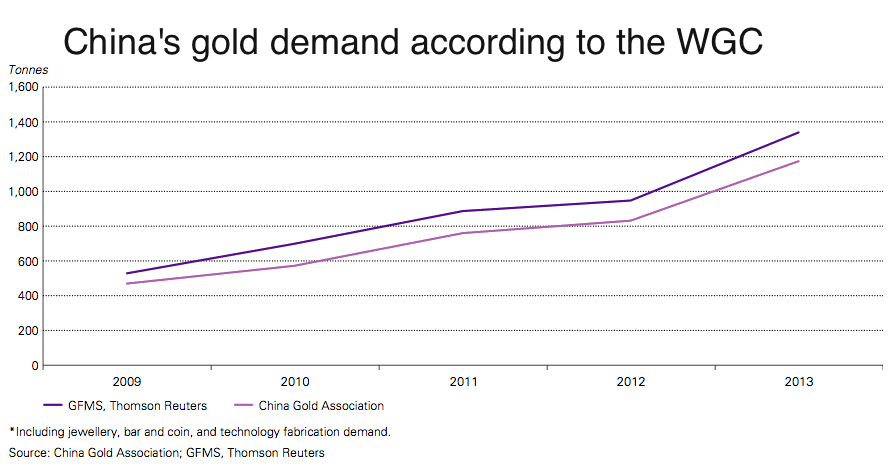 Taken from "Understanding China's Gold Market" According to the organization, the nation's gold consumption plunged 52% to 192.5 tons in the second quarter from a year earlier as buyers purchased fewer bars, coins and jewellery amid a clampdown on corruption. As much as 1,000 tons of gold may have been used in financing deals in China, the WGC said in April. Jansen says gold demand from the Asian giant that can actually be documented, almost surely does not include all the gold being purchased secretly by the People's Bank of China. You can read his full column here. |
| Canadian government ‘not pleased’ with Nova Scotia’s plans to ban fracking Posted: 05 Sep 2014 10:46 AM PDT Canada's federal Finance Minister Joe Oliver warned Friday the province of Nova Scotia could be thwarting a key economic opportunity by banning high-volume hydraulic fracturing for onshore shale gas. The decision, which follows an independent panel review that recommended the government proceed slowly, prompted criticism from industry groups, which insist the process is safe and could bring big financial payoffs. The minister, Canadian Press reports, echoed that sentiment, arguing several provinces have carried out fracking for decades without any contamination of drinking water. "When a government steps back from the responsible development of its resources and that development doesn't create an environmental risk, there are economic consequences inevitably to that and there's a lost opportunity," he was quoted as saying. But N.S. Energy Minister Andrew Younger says the province is only banning high-volume fracking, which requires far more water than conventional fracking and has been around for less than a decade. A two-year moratorium on fracking was put in place by the previous NDP government in 2012 as public protests grew in Nova Scotia and in neighbouring New Brunswick. In a statement Wednesday, Younger said the Liberal government made its decision following input from the public, including aboriginal leaders in the province. "Nova Scotians have clearly indicated they are not yet ready for the use of hydraulic fracturing in the development of shale reserves," he said. Fracking enthusiasts say the industry could spur Nova Scotia's stalled economy and reduce its dependence on coal-fired plants. The problem, says Barbara Pike of the Maritimes Energy Association, is that the province needs energy, particularly natural gas. "The public should understand that if we're not going to get it locally, we're going to get it somewhere." |
| Posted: 05 Sep 2014 10:30 AM PDT The Federal Reserve's third quantitative-easing campaign is on track to wind down in late October. At that point the Fed will likely stop printing new money to buy bonds, a sea-change shift with ominous implications for the stock markets. Their entire surreal levitation during QE3 mirrored the huge growth in the Fed's balance sheet from QE3's bond monetizations. When they cease, another major selloff is likely. QE3's impact on the global financial markets has been vast beyond belief. The Fed launched QE3 in September 2012, just before the important United States elections. This goosed the US stock markets in that critical final couple months ahead of the elections, right when they were on the verge of selling off dramatically. Odds are very high that the Fed's brazen market manipulation gave the election to Obama. In the 28 presidential elections since 1900 prior to that 2012 one, the stock markets rallied in September and October 16 times. The incumbent party won 15 of those elections! And during the 12 times when the stock markets fell in September and October, the incumbent party lost 10. The Fed choosing to launch a stock-market-boosting QE campaign in those pre-election months forced stock markets higher. If the S&P 500 (SPX) had dropped as it was set to do in September and October 2012, Obama would've almost certainly been a one-term president. The Fed's colossal market and political manipulation was no accident. Since QE2, Republican lawmakers had been highly critical of the Fed's money printing to buy bonds. The low interest rates that spawned enabled Obama's record debt-fueled spending binge. Since the Fed faced serious challenges to its independence all the way up to its very existence from a Republican president and Congress, it massively intervened in the markets to sway an election. And QE3 just got worse from there. The Fed expanded it to include direct monetizations of US Treasuries a few months later in December 2012. That forced rates lower, farther fueling Obama's epic deficit spending. QE3 was far different from QE1 and QE2, which were finite from their births. QE3 was the Fed's first open-ended debt-monetization campaign, with no prescribed limits. This potentially unlimited scope of QE3 helped create an exceedingly unfortunate side effect in the stock markets. Since QE3 had no defined end, stock traders figured it would be around to backstop stock markets more or less indefinitely. Led by uber-inflationist Ben Bernanke, the Fed's dovish communications fanned this popular belief among traders. Over and over during QE3 the Fed implied that it was ready to act, in effect to increase the scale of QE3's monthly money printing to buy bonds, if the stock markets slid. This incessant Fed jawboning left stock traders utterly fearless, as they figured the Fed would arrest any major stock-market selloff. So every dip was quickly bought, leading to the stock markets soaring. The SPX blasted 29.6% higher in 2013, the only full year of QE3! And this flagship index is up 39.5% since QE3's birth. And it wasn't like the stock markets were low before the Fed hatched its QE3 scheme. As of the day before, the SPX had powered 112.3% higher over 42 months in a very large cyclical bull. Stock markets were already lofty. Healthy stock bulls take two steps forward followed by one step back, major uplegs are followed by sharp corrections. These corrections, SPX selloffs between 10% and 20%, are essential as they help keep sentiment balanced. They bleed off greed before it grows too excessive and pulls too much future buying forward, killing the bull. The Fed's implied backstop with QE3 short circuited this natural and crucial process. When QE3 was launched just before those November 2012 elections, it had already been 11 months since the end of the last SPX correction. Typically they happen about once a year or so on average. And since QE3's debt monetizations have been in force, the necessary sentiment-rebalancing selloffs have become smaller and farther between. Today the SPX is up to an insane 35 months since its last correction! Provocatively the two previous full-blown corrections of this mighty cyclical stock bull cascaded right after QE1 and QE2 ended. When QE isn't in force, the Fed's implied backstop vanishes. So traders are not as quick to buy stocks indiscriminately, and sellers aren't scared away. The Fed's Federal Open Market Committee is on track to end QE3 at its upcoming October 29th meeting, an ominous omen for stocks. Without QE3, the Fed can no longer backstop stock markets or even claim it can do so. Thanks to Ben Bernanke's disastrous zero-interest-rate policy that's robbed savers blind since December 2008, the Fed can't cut interest rates if stock markets fall. And ramping up a QE4 is very unlikely if the Republicans regain control of the Senate in this year's elections, as they could potentially vote to revoke the Fed's very charter! The implications of a post-QE world are vast for the stock markets. To better understand why, you need to grasp the mammoth scope of the Fed's third quantitative-easing campaign. This chart shows the Fed's balance sheet since 2008 when QE was initially born. This data is stacked within the Fed's total balance sheet (orange), with US Treasuries (red) sitting on top of mortgage-backed securities (yellow). I've written comprehensive essays outlining the history of QE, what the Fed did when and why it decided to act. But for our purposes today, let's focus on the big picture. Prior to QE1's birth during 2008's once-in-a-lifetime stock panic, the Fed's balance sheet averaged $875b in the first 8 months of that year. Today that number has ballooned an astounding 5.0x to $4377b. QE has quintupled the Fed's balance sheet! When central banks buy bonds, they do so by first creating the money necessary for the purchases out of thin air. It is pure inflation. And when bonds are bought with this new money, it is transferred to the bond sellers to spend immediately as they see fit and the bonds are transferred to the Fed's balance sheet. So the $3502b in bonds the Fed has purchased so far equals the money it has printed for QE. The Fed's modus operandi for its three QE campaigns, and an intervening "twist" operation in the middle, has been very consistent. The Fed, ever cognizant of political pressure and withering attacks from Republicans who hate money printing, first launches each campaign at a relatively modest scope. And then soon after once the initial political storms blow over, it greatly expands the scale of its bond buying. QE1 initially started at $600b, but then was soon expanded to a staggering $1750b total. Soon after it ended, QE2 started at $300b but was shortly tripled to $900b. Twist, the Fed selling the shorter-term Treasuries it held to buy longer-term ones to manipulate long interest rates lower, was also expanded. And QE3 followed this template, $40b in monthly buying shooting up to $85b total just a few months later. QE3 was unique in its open-endedness, the Fed set no limits to its size up front as it did with QE1 and QE2. QE3 ended up running full-steam for all of 2013, boosting the SPX to its massive late-bull gain last year. But last December, the Bernanke Fed finally decided it better start slowing its epic monetary inflation before the inevitable resulting price inflation got out of control. So it started "tapering" QE3. At every meeting since then, the FOMC has continued to slice away another $10b of new monthly QE3 buying starting the following month. And with QE3 down to just $25b per month today, the Fed only has room to do two more tapers since it has talked about taking the final $15b away at one time to avoid an undue trader fixation on that last $5b. And that full QE3 tapering should happen at the FOMC's late-October meeting. At that point, QE3 will have grown to $800b in mortgage-backed securities and $790b in Treasuries purchases for a total of $1590b. This won't quite reach QE1's supreme $1750b girth, but it sure dwarfs QE2's $900b. It's the Treasuries portion of QE3 that is the key component. That ran $300b in QE1 and $600b of new buying in QE2, so QE3's massive $790b of buying easily takes the QE Treasuries crown. All market interest rates key off of the "risk-free" yields of US Treasuries. So when the Fed prints money to buy Treasuries, it effectively pushes down interest rates for the entire markets as its artificial demand forces Treasury yields lower. In addition, the money printed and paid to the Obama Administration to buy Treasuries is immediately spent. So it is directly injected into the real economy, driving price inflation. The Fed has been the dominant buyer of US Treasuries during the QE era since the 2008 stock panic, purchasing $1956b worth. This works out to just over 25% of all the Treasuries issued since the end of the US government's fiscal-year 2008! Without the Federal Reserve buying up a quarter of all the debt the Obama Administration's extreme overspending has burdened America with, rates would be far higher. The extraordinary stock-market levitation spawned by the Fed's implied backstopping during QE3 blasted US stocks up to dangerously-high valuations. And the primary reason euphoric stock traders have rationalized them away isbond yields remain super-low thanks to the Fed's brazen interest-rate manipulations. But once QE3 ends, so does that downward pressure on Treasury yields and interest rates. As rates rise, which is inevitable with a quarter of the world's demand for Treasuries vanishing, stocks are going to look more and more overvalued relative to bonds. That alone is going to eventually lead to some serious selling pressure reemerging in the stock markets. And once a material selloff gets underway and the Fed's implied backstop through QE3 is gone, that overdue selling is going start cascading. Prudent investors and speculators today don't have to guess about what the end of QE3 means for the lofty Fed-inflated US stock markets. We have the precedent of the ends of QE1 and QE2. This next chart looks at the flagship S&P 500 stock index superimposed over the Fed's balance sheet. And out of all the many thousands of charts I've created over the years, this probably tops the heap as the scariest. The stock markets are forever cyclical, so after the last cyclical bear that climaxed after 2008's stock panic a new cyclical bull was justified and inevitable. I was one of the few contrarians who called for that bull right at the March 2009 bottom when bearishness and despair were suffocating. Nevertheless, this bull had a very high correlation with the Fed's balance sheet. When QE was underway, stocks powered higher. But whenever the Fed tried to wean complacent traders off the QE drug, the stock markets corrected hard. Right as QE1's massive bond monetizations were ending, the SPX tumbled 16.0% in 2.3 months in this bull's first correction. Provocatively the stock markets weren't able to regain their footing until the Fed quickly stepped in to announce QE2. The timing of that mushroomed the Fed-backstopping-stocks notion. Then during the QE2 money printing and bond buying the stock markets again climbed relentlessly without any correction-grade hiccups. But again the moment those QE2 debt monetizations ceased and the Fed's balance sheet stopped rising, the SPX plunged again. This second and latest correction of this cyclical bull hammered 19.4% off the SPX in 5.2 months. This almost hit the 20% cyclical-bear threshold! And once again it looked like the SPX didn't bottom naturally, but through Fed intervention. The low of that last correction happened just as the Fed was announcing its Twist campaign to twist the yield curve by selling shorter-term Treasuries it owned to buy longer-term ones. This helped boost the SPX again into another major upleg, which was running out of steam and looking toppy in late 2012 as the US elections neared. The SPX had actually stalled out in April 2012, without a single new high seen until September 2012 after first the European Central Bank and then the Federal Reserve announced new campaigns to buy bonds. After 5 months of zero upside progress before the ECB and the Fed's QE3 announcement, would US stock markets have rallied into the 2012 elections without the Fed's help? Odds are no way. As Treasury monetizations are far more potent than mortgage-backed-bonds ones, the stock markets were weaker after QE3's initial MBS buying and the resulting Obama win. But once the Fed expanded QE3 to include Treasuries in December 2012, the SPX started levitating. It soared in a very tight trading range mirroring the Fed's ballooning balance sheet, with no material selloffs to rebalance sentiment. This chart implies the entire reason the SPX rallied from 1500, the secular-bear resistance it would have almost certainly naturally topped at without the Fed's manipulations, was QE3 and its accompanying dovish jawboning. In my decades of trading, I've probably never seen a more ominous chart than this SPX levitation perfectly tracking the Fed's soaring balance sheet. The SPX/QE3 correlation is just stellar. If the ends of QE1 and QE2 both sparked major corrections, why shouldn't the end of the far-larger (in Treasury terms) QE3? Back in mid-2010 and mid-2011 when those earlier quantitative-easing campaigns ended, the stock markets where nowhere near as high and euphoric as they are today. Yet stocks still corrected hard when the Fed's inflationary tailwinds, and implied backstopping, were removed. Provocatively today's lofty stock-market valuations are similar to those seen at the major SPX toppings as QE1 and QE2 ended. When all 500 SPX component companies' individual trailing-twelve-month price-to-earnings ratios are averaged, they reveal the SPX trading at 26.6x near the end of QE1 and 24.1x near the end of QE2. The latest simple-average read for this metric as August 2014 ended was 26.1x! This is dangerously high, as 28x is actually the historical threshold for a bubble! Add these extreme overvaluations on top of the prevailing extreme euphoria and complacency, cyclical-bull-topping technicals, and a greatly overextended cyclical bull, and it is hard to imagine the end of QE3 not spawning a major selloff! It is actually far more likely to cascade into a new cyclical bear than stay a mere correction. Again the stock markets are forever cyclical, cyclical bulls are always followed by cyclical bears. The average size and duration of a cyclical bull within a sideways-grinding secular bear like we've seen in the stock markets since 2000 is a doubling in 35 months. Today's bull has nearly tripled, up 196.1%, in 66 months! It is far too big and far too old, meaning a selloff's highest-probability outcome is the next cyclical bear. Cyclical bears tend to cut stock prices in half over a couple years or so, they are dangerous beasts not to be trifled with. And once QE3 is done, there is no more Fed backstop in place to motivate traders to instantly buy every minor dip. With short rates zero-bound thanks to ZIRP, the Fed has no room to cut interest rates to arrest a stock-market swoon. And again QE4 is very unlikely in this political environment. The election-year stock-market studies I've seen are for the major presidential election cycles, not intervening midterm elections. But the results are likely similar. Rising stock markets make Americans feel better about everything, so we are more likely to vote for incumbents for more of the same. But we feel worse when stock markets are weaker, making us more prone to kick out the bums in hopes for change. So if the stock markets are weaker in September and October 2014, the odds grow that the Republicans are going to retake the Senate. They already have an edge, as Obama and the Democrats are very unpopular for a variety of reasons including the disastrous and punishingly-expensive Obamacare burdens on Americans. Republican voters skew older and whiter too, more likely to vote in midterm elections. The major corrections when QE1 and QE2 ended actually began a little earlier in anticipation, and it is reasonable to expect stock traders to start selling ahead of QE3's rapidly-approaching end too. And since the Fed won't risk the political wrath of the Republicans who will likely soon control the full Congress again, it isn't going to launch a QE4 soon. So any stock selloff won't have any hope of a Fed rescue! Thus the end of QE3 is exceedingly ominous for these lofty stock markets. A major SPX selloff, whether it is merely a 20%ish correction or a new cyclical bear, will drive devastating losses in everything from the high-flying momentum stocks to the conservative SPX-tracking ETFs like SPY. And it has been so long since we've seen any material selloffs that the resulting hit to complacent and euphoric sentiment will be massive. How can you protect yourself in this coming swoon? Buy gold. The entire precious-metals sector was abandoned and left for dead during the Fed's QE3-driven SPX levitation. But alternative investments will return to vogue in a big way once normal stock-market behavior including selloffs resumes. The gains coming in the beaten-down precious-metals sector will be vast as flight capital floods in looking for safe havens. The big risk of serious inflation igniting thanks to QE's huge monetizations remains too, which will act like rocket fuel for gold. Even when QE3's new buying ends soon, the Fed will still have $3.5t of bonds stuck on its balance sheet! That means $3.5t of new money injected into the economy that could start bidding on goods and services and driving up prices any time until the Fed can unwind its QE bonds bought. To thrive when this SPX levitation reverses, you need good contrarian advice. The shills on Wall Street will claim everything is great, don't worry, until late in the next cyclical bear. At Zeal we are hardcore contrarians who have long walked the walk. We tell it like it is, warning our subscribers when markets are topping and due to fall so they can sell high. And we help them buy low in other markets that are unloved.
Adam Hamilton, CPA September 5, 2014 So how can you profit from this information? We publish an acclaimed monthly newsletter, Zeal Intelligence, that details exactly what we are doing in terms of actual stock and options trading based on all the lessons we have learned in our market research. Please consider joining us each month for tactical trading details and more in our premium Zeal Intelligence service at … www.zealllc.com/subscribe.htm Questions for Adam? I would be more than happy to address them through my private consulting business. Please visit www.zealllc.com/adam.htm for more information. Thoughts, comments, or flames? Fire away at zelotes@zealllc.com. Due to my staggering and perpetually increasing e-mail load, I regret that I am not able to respond to comments personally. I will read all messages though and really appreciate your feedback! Copyright 2000 – 2014 Zeal LLC (www.ZealLLC.com) |
| You are subscribed to email updates from MINING.com To stop receiving these emails, you may unsubscribe now. | Email delivery powered by Google |
| Google Inc., 20 West Kinzie, Chicago IL USA 60610 | |
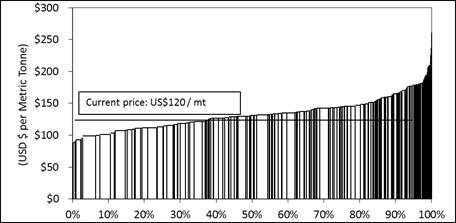
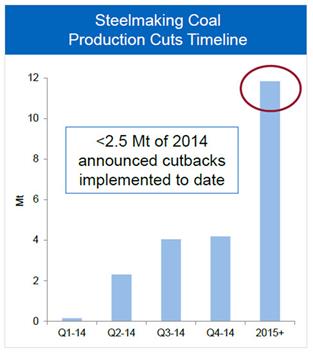



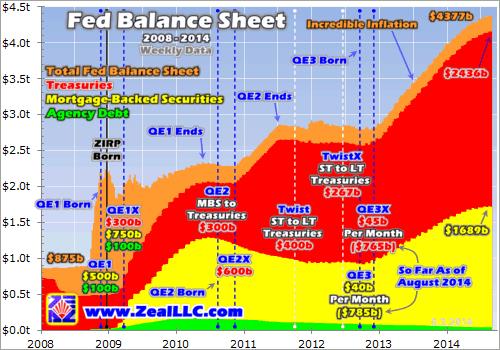
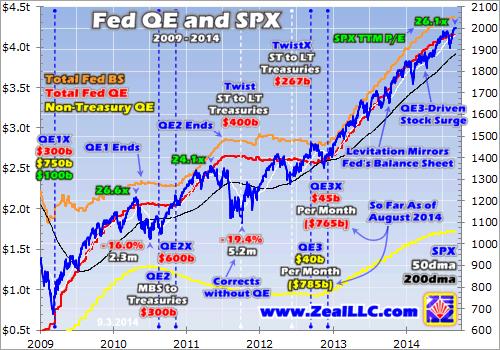
0 Comment for "Met coal could be reaching a cyclical low"